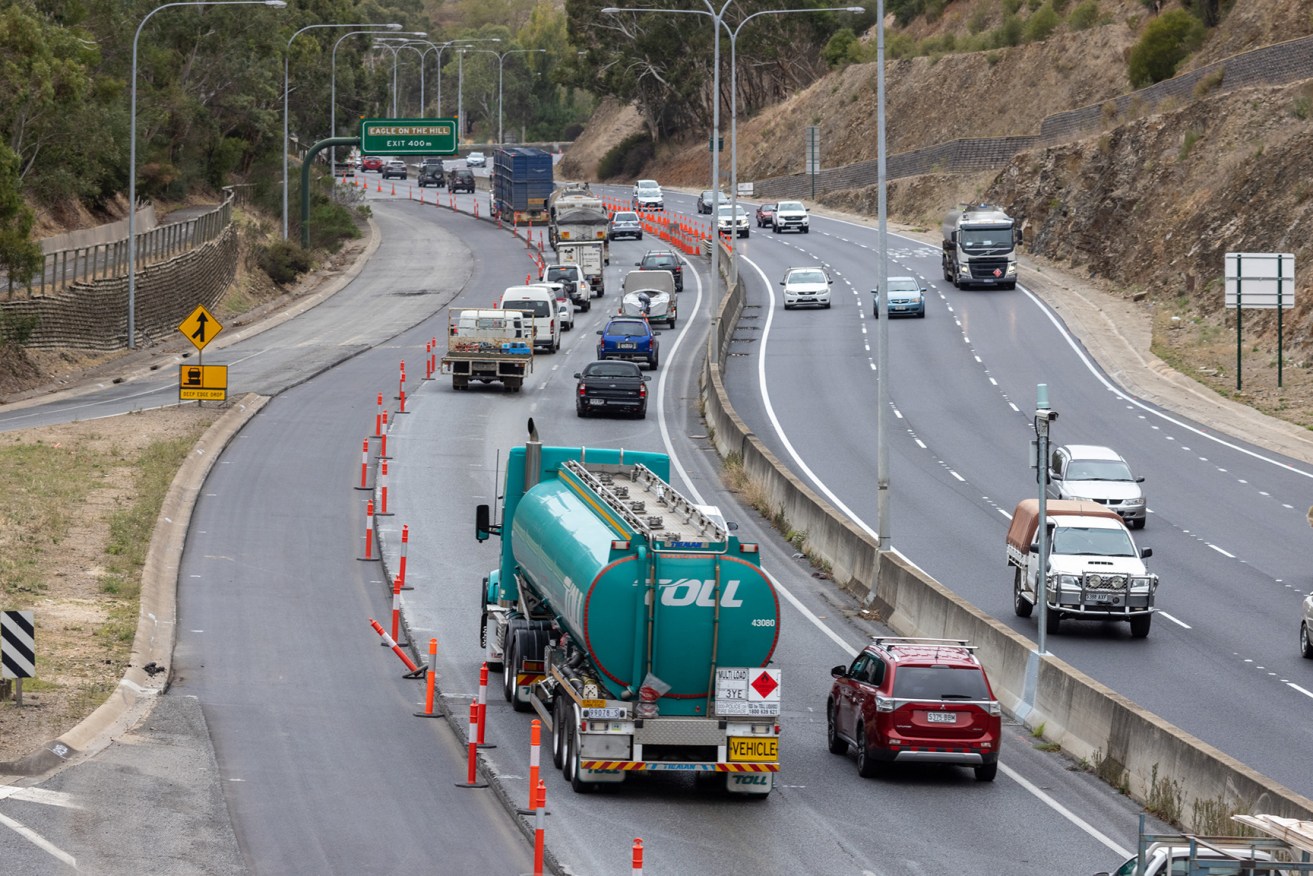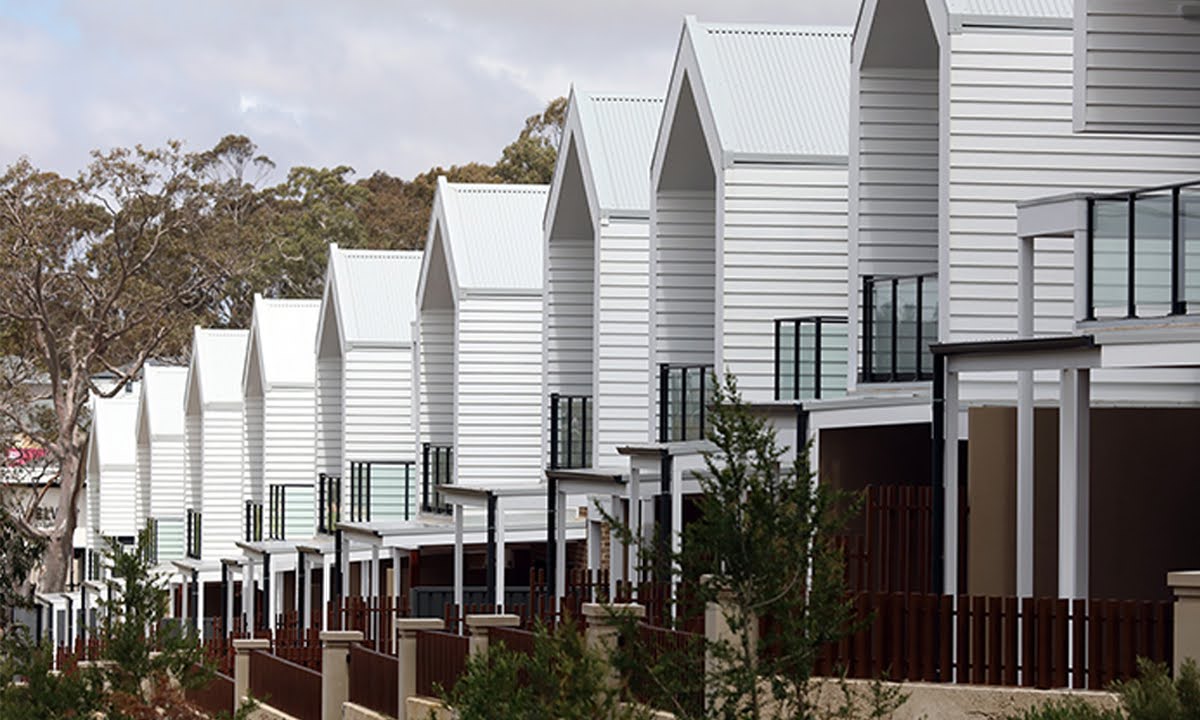Freeway fail: How SA’s transport planners ignored the obvious
Adelaide’s epic traffic jam this week is a reminder of how the state’s policy-makers continue to ignore the ramifications of rapid growth in the Hills.


Roadworks below the tunnels on the freeway. Photo: Tony Lewis/InDaily
Anyone stuck in Monday’s evening peak traffic won’t forget it quickly.
It was like the “butterfly effect” as described by Jeff Goldblum’s character in Jurassic Park: “A butterfly can flap its wings in Peking, and in Central Park, you get rain instead of sunshine.”
A single truck breakdown on the lower stretches of the South Eastern Freeway quickly led to one of the most spectacular traffic snafus in Adelaide history, stretching from Glen Osmond to the city.
Traffic quickly banked up for kilometres along Glen Osmond Road, Portrush Road and Cross Road. And it was seriously stuck: some commuters reported being trapped for as many as three hours.
My own commute from the city to Mt Barker took two-and-a-half hours.
There were some extenuating circumstances: the left-hand lane of the freeway is out of action due to roadworks.
But what struck me during the whole shemozzle was how the freeway itself wasn’t the only problem, nor was the volume of trucks – the obvious bogeyman understandably highlighted by most people this week.
On Glen Osmond Road, where I was parked for an hour and a half, there was barely a heavy vehicle to be seen. Certainly, the volume of trucks was completely overwhelmed by the number of cars with single drivers – most of them likely to be heading up to their homes in the Hills.
Once I managed to squeak across the clogged intersection to the freeway proper, traffic moved slowly but steadily past the breakdown. A key part of the problem, maybe the biggest part, was beyond the freeway: the traffic volume and its management on the feeder routes, particularly intersections. And that is something that our transport authorities should be able to control.
In the past 20 years, those routes have faced increasing traffic due in large part to rapid housing development in the Adelaide Hills, with my home town Mt Barker leading the way.
Everyone knows this has been happening. Governments have had years to prepare and have done very little to deal with the cascading effects of traffic growth beyond the freeway.
The truth that they were warned about the freeway intersection years ago – but that warning was buried deep and ignored.
Labor planning minister Paul Holloway controversially paved the way for the massive expansion of Mt Barker in 2010 with his defiant rezoning of vast swathes of rural land around the town to residential.
His legacy will be lasting. While Mt Barker’s town population has grown considerably since 2010, the full effects of the expansion are yet to come.
In one of the documents that were meant to guide planning at the time – the so-called “Growth Investigation Areas” report, which informed the development of Holloway’s 30-year Plan for Greater Adelaide – the government was warned to consider the impact of the Mt Barker expansion on the exact roads that were a nightmare this week.
The report can be found in a dump of Mt Barker documents tabled by the then Labor Government in Parliament in 2013.
Most of these documents were produced for the government by consultant Connor Holmes who, the state’s Ombudsman found, had a conflict of interest because they were also working for developers lobbying the government to rezone the rural land at Mt Barker.
They were working both sides of the street (or freeway as it happens).
In one of the growth area report’s appendices, the consultants say that while the capacity of the South Eastern Freeway is “not considered an impediment to development”, the suburban roads and the key intersection at the foot of the freeway would probably need work.
Imagine the political blowback if the government attempted to widen Glen Osmond Road along much of its length?
Under “Transport”, the appendix says: “Capacity of the Portrush, Cross and Glen Osmond Road intersection to cater for significant increased traffic volumes (especially Glen Osmond Road) requires consideration and possible future road widening measures”.
It is telling that this warning was so brief and buried in an appendix. It wasn’t part of the formal report on the Mt Barker expansion provided to cabinet at the time.
So it isn’t surprising that, since then, nothing substantial has been done to address capacity of this key intersection nor any of the roads it feeds into.
The freeway, allegedly no “impediment” to development, has had some small improvements.
The Marshall Government has also chosen to focus federal “congestion-busting” funds down the track – on Fullarton Road where it meets Cross Road and Glen Osmond Road, and further down Portrush Road at the intersection of Magill Road.
While these measures will improve local travel times when they are eventually completed, they will do little to address the bigger system problems – nor the issues raised in the original growth areas report.

New housing on the fringes of Mt Barker. Photo: Tony Lewis/InDaily
In fact, these intersection upgrades demonstrate exactly why no government has had the courage to do something more substantial about the obvious problems with capacity on Glen Osmond Road in particular, and might explain why the flow-on effects of expansion were given short shrift in the Holloway era.
Consider the pain of compulsory acquisitions on the Magill-Portrush intersection and the understandable brouhaha over the widening of the Fullarton-Cross road junction, which will result in the demolition and relocation of the heritage-listed Urrbrae gatehouse (it’s either that, the government insists, or the demolition of people’s homes).
Imagine the political blowback if the government attempted to widen Glen Osmond Road along much of its length?
It is a mystery, though, why the intersection that caused most of the grief on Monday – where the freeway meets Glen Osmond, Cross and Portrush roads – doesn’t appear to be in line for any attention.
The transport department’s 2018 report Keeping Metro Traffic Moving, doesn’t list it as a priority.
The Marshall Government’s GlobeLink plan to remove heavy vehicle freight from the freeway failed as a business case, and planners are now looking at other options. One development seems likely, and that’s the increased use of Cross Road to an upgraded South Road as a freight route. That’s not going to help freeway commuters. In fact, it would make things worse.
The Government has now moved to have a heavy vehicle towing vehicle on stand-by while the freeway roadworks are completed.
Fair enough, but piecemeal measures are not nearly sufficient to address the traffic nightmare that is likely to come.
Unless broader work is done, on traffic flow, on road freight, infrastructure and, most importantly, on substantially improving public transport to the Hills to reduce traffic volume, large sections of the south-eastern suburbs of Adelaide can expect Monday’s butterfly effect to become a more common occurrence.
Glen Osmond Road is already a car park during peak hour – add hundreds and thousands more commuters and it will be unworkable, not matter what fiddling is done at the Fullarton Road intersection.
A comprehensive plan is needed.




